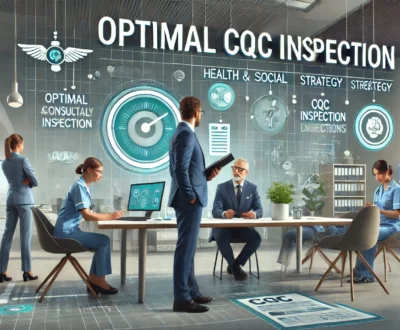Much time is spent taking about governance in regulated services. But everyone has a different view about what it means!
Many regulated services have policies and procedures that sit on a shelf to comply with local authority and regulatory requirements. The staff do not always use them and in extreme cases would not even know they existed. An industry has grown up selling off the shelf policies and procedures and many are great, however is your business “off the shelf”?
The basis of Good Governance is great processes backed up by policies and procedures. An open culture that allows everyone to bring to the attention of the management when things are not quite right. This information is then reviewed, are there trends in incidents, accidents, or complaints? Has the issue arisen due to poor practice, a lack of understanding or was everything done in accordance with the current policy, but it didn’t work?
Lack of Good Governance is often commented on in regulatory reports and usually that is because there is a misunderstanding between the inspectors view of governance and the management team. When we visit a service and we are told there have been no incidents and no complaints for weeks or months, we know immediately that the governance system is broken. For great governance to happen the management needs to know what is going on. This may be from something simple to a catastrophic incident.
So how do we achieve a simple but effective method of governance?
- Review your current policies and procedures – Are they up to date and fit for purpose?
- Do staff receive training in the polices and procedures? By that we do not mean give a new starter 2 lever arch files to read and sign as read. Test their knowledge too, if staff say “we don’t do that” is there something wrong with their practice or is the policy in need of tweaking?
A word of caution if you are going to tweak the policies or procedures are you still compliant with national standards? NICE Guidance is a useful source of information.
- Once you are content that your policies and procedure are as good as you can get them in the first instance, do your staff team have the resources to carry out the tasks as per the policy or procedure. The next step is to understand when things go wrong – that is to say when things didn’t go to plan. There are several ways to do this:
- A) Review accident forms – Was it preventable? To do this you will need to look not just at the accident in isolation, although this is vital to see if something need to be reviewed. Look at trends too, is it that there is an increase in falls, in a care home lounge between 18:30 and 20:00 when staff are busy helping residents and there is not sufficient supervision in the lounge?
Document these reviews, both of individual accidents, but also information taken from a trend analysis.
- B) Complaints – Encourage everyone to record complaints correctly, no matter how small they are. Often a series of small complaints can escalate into something bigger. Ensure that you respond to complaints appropriately in a timely manner and in accordance with your policy.
Keep a record of your investigation and the outcome of the complaint, along with any documentation used. Sometimes a Root Cause Analysis can really help. No matter how you choose to manage the complaint a full, honest response is vital.
Again, monitor trends, are several complaints about the same thing? Did they occur when the same people are on duty? Is there something that needs changing in a system?
- C) Incidents – Staff should be encouraged to report incidents no matter how small, these incidents should be reviewed by management and responded to. This may be via a briefing document and investigation and review of systems. As before, trend analysis is important, as a trend could demonstrate a need to change.
Something to consider: staff may not want to record incidents because of a fear of being blamed. Therefore, creating a “no blame” culture is vital. Again, this is not always fully understood by staff and providers alike. A no blame culture is not about condoning poor practice but is about working together to achieve a common goal. A good way to do this is to undertake a “root cause analysis” this takes the personality out of the investigation and looks at service delivery issues.
- D) Keeping policies up to date – Review everything above regularly and review your procedures when required, but do not forget a formal annual review. This is a way of engaging staff with special interests to help them to feel a bigger part of the process.
Once you have all the information what do you do with it?
It is important to recognise good and exceptional practice, but also use a briefing system to disseminate information about what change need to happen. A briefing paper hasn’t got to be long or artistically designed, it is something that can be read at handover meetings.
Hold meetings, at least bi-monthly, to discuss the tends and incidents that have occurred, changes to policies and procedures and what further action is required. The key to all the above is good documentation.
Good Governance in action may be a daunting subject but it doesn’t have to be. The Swift Management Team can undertake a Governance review and provide you with a Good Governance action plan. If once received, you would like a consultant to work with you to install systems and review policies and procedures with your team to ensure they really are fit for purpose we can do that too.
If you would like training in Root Cause Analysis we are able to offer virtual training sessions specific to your organisation or you could join one of our open courses.
To find our how we can assist with Good Governance please get in touch.



